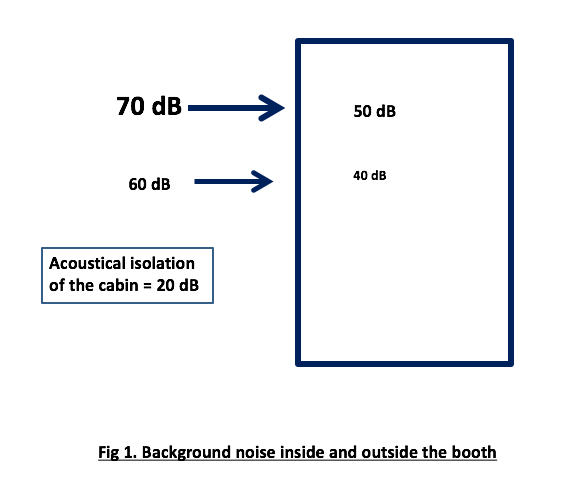Background Noise in Audiometric Booths and the New CSA Standard on Audiometric Tests
A new edition of the CSA Standard on audiometric tests was issued during the last month of last year. Among others, there is a change of the name. Now it reads:
CSA Z106.6 – 16 Audiometric testing for use in hearing loss prevention programs, December 2016.
It clearly states that it is only for use for hearing prevention and not for clinical tests. There are many changes with respect to the previous Z106.6, published in 1990 under the title Audiometric testing for use in hearing loss prevention programs (also known as “screening audiometry”).
This edition incorporates several amendments and additions to the 1990 edition, as follows:
- addition of mobile audiometric test facility requirements;
- elaboration on different types of audiometric test equipment and their calibration requirements;
- elaboration on audiometric technician training requirements;
- elaboration on pre-testing requirements, including checking the functioning of the equipment and providing instructions to and preparing the individual to be tested including example questions that the technician can ask the individual prior to the test;
- addition of guidance on classification of the audiometric test results;
- addition of guidance on informing the individual about the test results.
In this article we will concentrate on the issue of the audiometric booths, specifically in the aspect of the background noise.
SECTION 4: AUDIOMETRIC TESTS FACILITIES AND REQUIREMENTS
This is a new section that clearly makes distinction between requirements for fixed and mobile facilities. It is a well-known fact that many sites cannot afford or don’t really need a fully equipped facilities and personnel for performing audiometric tests. They relay instead to external providers that use mobile facilities. Those consist in most of the cases in vehicles or trailers that contain audiometric boots and equipment. In many occasions they are parked in parking lots with noisy vehicles operating in their vicinity.
The standard describes three environments for the test facilities:
- Testing area (audiometric booth),
- Control area (where the technician seats) and, eventually,
- Advising area, where the result of the audiometry is discussed with the individual and where counselling regarding hearing conservation and hearing protectors use is provided.
In many occasions, the Control area is also used as an Advising area.
Requirements for each of the three areas are specified separately for the fixed and mobile facilities.
EFFECTS OF THE BACKGROUND NOISE
It is well known that background noise has a masking effect on the audiometric signal, resulting in false positive results (hearing losses that are not such): the subject needs a stronger signal to be able to hear it. Also, conversations have distracting effects that may also provide false positive results.
That is why the highest sound level of the background noise is normalized. For each one of the test frequencies between 125 and 8,000 Hz, the sound level is specified for two types of headphones: supra-aural and insert. It should be noted that the measurement of the sound level shall be performed using a type 2 Sound Level Meter equipped with octave band filters. 1/3 octave band filters shall not be used, since the results will be different.
“I CAN HEAR IN THE BOOTH”
It is a common experience that some subjects when exiting the booth after the test observe that they were able to hear noises from the outside of the booth. Most frequently observations relate to footsteps (especially with high heels) and conversations. That is when doubts about the efficiency of the quality of the booth arise.
It shouldn’t. An audiometric booth is not an anechoic chamber, where the sound insulation is very high (in the order of 50 dB [Strictly speaking, the sound insulation should be specified at the normalized frequency. In this article the statement of “insulation of xx dB” is included only to give an idea of an average insulation.]) and the background noise is close to 0 dB. There is no need for a very high attenuation for audiometric tests. Also, a low background noise inside the booth can be obtained by just locating the booth in a quiet place in the building.
Let’s analyse the above statement: Figure 1 shows a booth with an attenuation of 20 dB. If the ambient noise outside the booth is 70 dB, then inside noise will be 50 dB. However, if the outside noise is 60 dB, then the inside will be 40 dB.
It is a common mistake to purchase an expensive booth and to locate it in a noisy spot. As a matter of fact, the proper way of specifying a booth is to measure the noise in the place intended for the booth and provide the result to the booth provider. He in turn will use the results to specify the booth that will assure a background noise level compatible with the standard’s requirements.

For more information please visit the CSA Group’s online store http://shop.csa.ca/en/canada/environmental-technology/z1076-16/invt/27010932016

